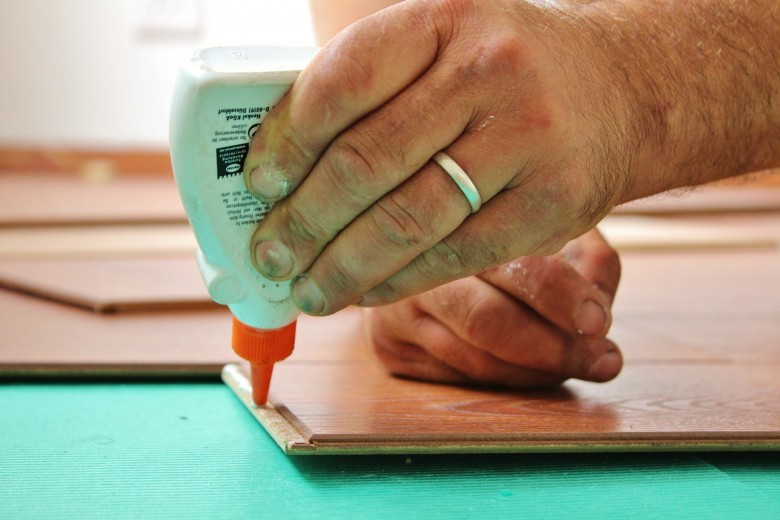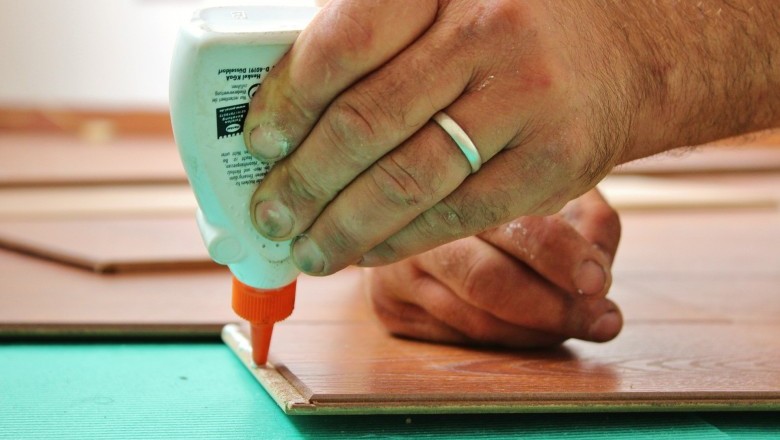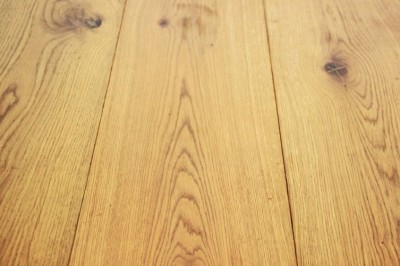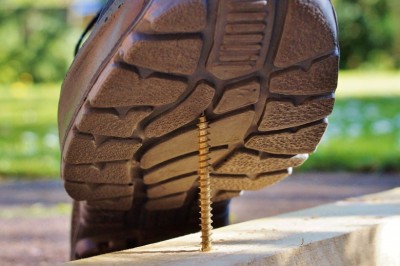
How to Install Laminate Tile Flooring
Laminate Tile has become a popular choice for kitchen and bathroom flooring. Installing laminate tile is a straightforward process, easily accomplished by nearly anyone.
To install your laminate tile floor, just follow these simple instructions:
The first step to installing laminate tile is to remove the old floor material that you are replacing. Be sure the old floor is gone, and any padding, tacks, nails, and staples or glue are cleaned up. Give yourself a clean working surface by vacuuming the entire area very well.
Laminate tile is a very forgiving flooring material. It can be installed on most types of sub-floor. There are only a few exceptions:
* If there is a noticeable "dip" in the floor it should be repaired prior to installation. This will prevent the laminate tile from cracking at the seams in time.
With concrete, thin set can be skimmed into the dip. With plywood or other sub-floors, you may need to fix the underlying structure or use concrete board to firm it up.
* Repair sub-floors where necessary. If you have cracked, broken, or rotten sub-floors, youll want to ensure this is repaired prior to laying your laminate tile. Covering up a rotten sub-floor is not a good idea for long term application!
Now, carefully remove the baseboards and save them for later or you can leave them down, and install quarter rounds to cover the expansion gap. If you decide to remove the baseboards, you need to take good care not to damage them because you will be re-installing these boards later, and you can save some money if you use extra care when taking them off.
If you walk around the floor and hear creaks, liberally use 2" screws to tightly fasten the sub-floor to the under structure. By placing 2" screws every couple of inches around the vicinity where you hear the creaks and groans, you may be able to reduce the overall movement and eliminate the unwanted sound.
Installing the Floor
The first step of installation is to roll your underlayment pad.
If you have not yet purchased your underlayment, it is a good idea to buy the thickets pad you can find. A thick pad is highly advised, and will reduce any hollow sound that laminate makes as you walk on it. A thick pad equals a nice floor!
Once you roll your underlayment pad out, make sure you tape the seams with a wide clear plastic or underlayment tape. Once the laminate tile floor is laid, this will keep the pad from moving and will allow the pad to absorb the clicking sound as you walk across your new floor.
Laminate tile usually connects with a simple locking system. Each brand is a little different, but the basic premise is that of inserting the groove of one tile into the slot of the other, and pressing down. It is a very simple procedure that anybody can do. Unlike traditional tile, no professional installation is required.
Connect your tiles one-by-one and row-by-row by using a staggered pattern until you cover the entire floor area. Laminate flooring is called a "floating floor" because it is not attached to your house. It just floats freely on top of the sub-floor. With this in mind, be sure to leave 1/4" clearance from each wall, which allows your "floating" floor to contract, expand, and move a little. Most laminate tile installation kit comes pre-packaged with 1/4" spacers that you can use to ensure your floor doesnt get too close to the wall.
If you find that a few pieces of tile dont naturally fit tightly together, you can use a tapping block or softly tap the floor with a rubber mallet to bring them together. Dont "tap" too hard! If a couple of soft taps dont fix the problem, the locking system is not aligned properly.
Finishing it up
If you used the 1/4" spacers, remove them and re-attach the baseboards or install the quarter rounds. Hopefully you removed them gently so that they can be re-used here! Never nail your baseboard or quarter rounds into the floating floor. Since this is a "floating floor", you dont want it to be attached to the sub-floor.
The most important part of installation
The most important thing you can do to ensure a quality floor is to purchase quality products in the first place. There are so many different types of laminate tile on the market, that a consultation with a flooring expert is highly recommended.
--
The professionals at Total Floors Express can advise you on your
laminate tile, and other flooring options. Get a free, no-pressure flooring consultation with an expert who can help you narrow the choice of flooring for your particular situation.
Total Floors Express offers both a free consultation, and the most competitive prices available online (or offline). They also ship to all 50 states.
Get your free consultation at
http://www.TotalFloorsExpress.comor by calling 1-800-946-0568.
































